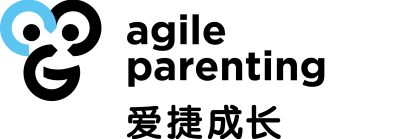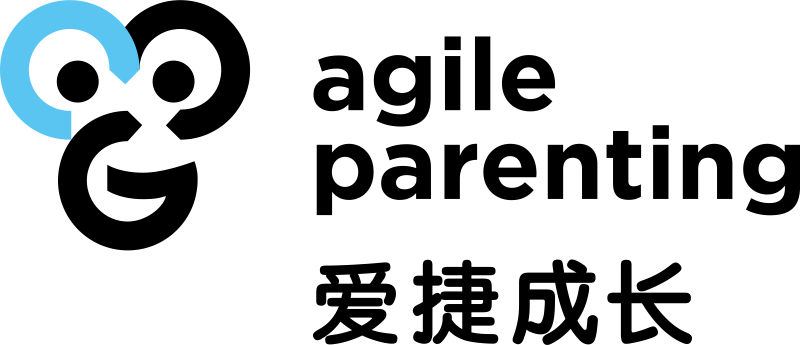At the end of June on a warm, colorful Friday evening, I went out for a drink with Wang Man. She has been my management consultancy colleague and friend of more than 10 years. This was a well-deserved treat after more than four months of juggling full-time jobs and homeschooling. In Beijing, schools had closed for Chinese New Year at the end of January 2020. They remained closed for the rest of the school year.
Wang Man is a passionate admirer of Elon Musk in particular and anyone wearing a wizard hat in general. She claimed over our first round of cocktails that CoVid-19 would change everything.

Me, a fan of anything playful without being totally silly, stated that everything would stay the same. This was about to become an amazing evening. I knew it!
We talked about our experiences with homeschooling. This had been the most disruptive experience in our family lives since the birth of our children. We both thought we had been doing quite well. Compared to those families under complete stress where panicking tiger mums and exhausted kids screamed and struggled until 10pm every day. Or those that quietly had started to ignore the daily emails from school at some point because peace, quiet and harmony were valued higher than the need to keep up with academic expectations.
These were the main challenges
We tapped into each other’s experiences and expertise of pulling through the past months, which had posed these challenges for us:
- Kids needed to be cared for the whole day without the normal eight hours of school. Squeezing in an eight hour working day at the same time was exhausting – to put it mildly. Furthermore, for your kindergarten and primary school kids this being-with-mum-at-home clearly signaled: “Holiday!” and not “This is like school, just at home”.
- Teaching is a profession and we were not trained for this. As a management consultant you have the advantage that “fake it till you make it” is your mantra. Looking reasonably convincing when doing things you had never done before is a basic skill for succeeding in this profession. Anyway, delivering the content hidden behind and next to the worksheets our daughters received from school on a daily basis was difficult. How was I to explain the use of expressive language in creative writing? My own learning experience at a German public primary school forty years ago had mainly taught me to avoid spelling mistakes.
- This mysterious disease around us, closing borders, quarantine, fuzzy regulations – this all created a sense of insecurity and vulnerability that spilled into every domain of life.
And these were the bonuses
However, we both had also seen many positive things happening because of this situation.
- Spending so much time with our kids meant that we got to know each other much better. This might sound strange and when I asked my nine year old daughter about this, she disagreed. She thinks she always knew me perfectly well. For me however, many of the deep conversations I had with my girl who is slipping from childhood into her pre-teen world, could only take place under these intense circumstances. We cherished the the new slow pace of everything.
- The more organic flow of our days also eliminated most of the stress. Kids could sleep in. This is something my daughter enjoys. After breakfast she would do her tasks from school until early afternoon. Afterwards, she could go and play with her friends until dinnertime. Instead of rigid schedules we now had the chance to listen to our many needs. This involved either playing with toys in between or spontaneous ice cream treats when a creative writing piece had come out particularly well – or not well.
- Less social stress for our children that comes from competition in class, conflicts during playtime and teachers losing their nerves and shouting.
- Better diet and relaxed meals with home-cooked food. Instead of ordering food or fixing quick dinners we celebrated life by putting much more effort than usually possible into cooking. The stomach problems my daughter has had for years completely disappeared. Furthermoer, eating together with the whole family after a long day of homeschooling and home-office was a very warm experience of simple pleasures.
Trust your daughters to get the job done
Still, we had to find ways to make home-schooling work while continuing to deliver professionally. We had no choice but to:
- Hand over a big chunk of responsibility for academic achievement to our daughters. There was no way we could micro-manage their learning on a daily basis.
- Involve our kids in the communication with teachers or let them communicate directly by zoom or email. Being the usual disseminator of information in both directions was not doable.
- Equip our daughters with access to all tools necessary to complete their tasks. This included devices like ipads and passwords. They had to download zoom and MS teams and connect the newly bought color printer themselves.
Wang Man and I had just ordered our second drink at the bar which claimed to use ingredients based on traditional Chinese medicine, when we both got the idea that… you know… this is like agile…
What we were doing is Agile Parenting!
At that same evening, we also found out that we had quite different agile parenting styles. Wang Man is more the SCRUM type. For instance, she had organized the tasks for her daughter Sophie into compulsory and optional tasks. The rule was that the compulsory tasks had to be finished by Friday every week. Optional tasks that were academic but fun, could be done at her kids’ discretion.
The underlying logic was, that the compulsory tasks could be accomplished within three days if Sophie, a first grader, worked on them consistently. Then the rest of the week would be free for playing or she could do optional tasks. Wang Man and Sophie discussed the content of the tasks and the expected outcome at the beginning of the week. Then they did a rough planning on how to distribute them over the week.
When that was all agreed, Sophie was free to do her own scheduling and re-shuffle work if she found that appropriate. Wang Man had equipped her daughter with a recommendation but at the same time empowered her to find a schedule that suited her best. She could take decisions herself as long as she stuck to that one basic rule.
SCRUM and agile values
In retrospective, the starting point for myself was not so much SCRUM but rather the agile values. I had never made the conscious choice to do so, though. I have been supporting companies to introduce agile project management for years. The underlying mind-set seemed to be a natural way of managing homeschooling.
The Manifesto for Agile Software Development is a reaction to the frustration of the industry in the 1990’s. At that time it was usual to do software projects with the very rigid waterfall system over long time-spans. The result often was perfectly executed software – which unfortunately came too late because since the beginning of the project the world had changed. These are its core ideas:
Individuals and interactions over processes and tools
In my case this meant that I took all the schooling materials we were provided by school as a guideline to manage learning, not as law. The purpose of homeschooling – and the freedom that came with it – was to fill gaps and work at my daughter’s pace and according to her capabilities. When there we assignments we did not regard as very valuable, Antonia did not do them. Instead, she included enhancing her German into the daily routine.
Working software over comprehensive documentation
All the work Antonia did was for her, not for the school. We ignored all “learner of the week” competitions that rather had the purpose to “market” the fact that she was a hard-working student. The only metric for us was to keep up with the academic level expected at the end of grade 4.
Customer collaboration over contract negotiation
Homeschooling was not just a massive change for us, it was also tough for the teachers. Suddenly they were doing zoom calls instead of interacting with the kids directly, being able to get real-time feedback on how they felt about the tasks. I encouraged Antonia to utilize the few touchpoints she had by attending the daily remote calls. Most of the time she was the only attendant at her Chinese class. This made her even more diligent in showing up at that weekly call at Friday noon – to show her lovely teacher her appreciation and add human touch at a time when we were all craving it.
Responding to change over following a plan
- Sometimes you start very motivated and plan to accomplish a lot of tasks – just to find out that some of them are really tough and time-consuming and you cannot do them all.
- You might also want to re-consider your plans, when the weather is just gorgeous and the air quality below 50 pm 2.5 and it would be such a waste not to play outdoors with your friends the whole afternoon.
- A change of direction is also needed when an assignment that could have been done on a small scale develops into something really interesting and meaningful. It suddenly fills the whole day until dinner time.
Whenever we had the feeling it would create value to change the plan we had agreed on in the morning, we did so. The plan was there to help us structure the day, nothing else.
For us this meant that every morning we planned what could realistically be achieved. Whenever changes were needed later on, we discussed what to do: Was it ok to totally skip a task, scale it down or move it? My purpose was to empower Antonia to a certain extent to also make decisions by herself. I did not have the time and capacity to watch her every minute since I had to work and attend meetings. There was the urgent need to create a very strong sense of ownership for her overall learning.
Wang Man and I felt very excited about this discovery. We therefore decided to explore the possibilities of applying agile and SCRUM further and in a more structured way and called it “Agile Parenting”. This is how it started 😉


